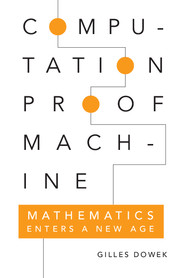Book contents
- Frontmatter
- Dedication
- Contents
- Introduction: In Which Mathematics Sets Out to Conquer New Territories
- PART ONE Ancient Origins
- PART TWO The Age of Reason
- Part Three Crisis of the Axiomatic Method
- 9 Intuitionistic Type Theory
- 10 Automated Theorem Proving
- 11 Proof Checking
- 12 News from the Field
- 13 Instruments
- 14 The End of Axioms?
- Conclusion: As We Near the End of This Mathematical Voyage …
- Biographical Landmarks
- Bibliography
13 - Instruments
from Part Three - Crisis of the Axiomatic Method
Published online by Cambridge University Press: 05 May 2015
- Frontmatter
- Dedication
- Contents
- Introduction: In Which Mathematics Sets Out to Conquer New Territories
- PART ONE Ancient Origins
- PART TWO The Age of Reason
- Part Three Crisis of the Axiomatic Method
- 9 Intuitionistic Type Theory
- 10 Automated Theorem Proving
- 11 Proof Checking
- 12 News from the Field
- 13 Instruments
- 14 The End of Axioms?
- Conclusion: As We Near the End of This Mathematical Voyage …
- Biographical Landmarks
- Bibliography
Summary
astronomers used to observe the sky with the naked eye until, in the early seventeenth century, Galileo made his first telescope – or, as some historians would have it, simply pointed a spyglass skywards. Similarly, biologists originally observed living organisms with the naked eye until Anton van Leeuwenhoek started using a microscope. Thus, in the history of many sciences, there are two distinct periods, separated by the introduction of the science's first instrument.
Until the seventies, mathematics was practically the only science not to use any instruments. Unlike their lab-coated colleagues, mathematicians only required a blackboard and some chalk to make their science progress. This peculiarity can be explained by the fact that mathematical judgments are analytic: they do not require any interaction with nature and, above all, they require no measurements. Telescopes, microscopes, bubble chambers, and the like are measuring instruments or, to put it differently, instruments that extend the faculties of our senses. Therefore, it seemed natural not to need any of those when practicing mathematics.
In 1976, mathematics entered the instrumented period of its history. The instruments used by mathematicians, namely computers, are no measuring instruments; their function is not to extend the faculties of our senses, but to extend the faculties of our understanding, that is, to prolong our reasoning and computing faculties.
When an instrument is introduced in a science, a change occurs which is more quantitative than qualitative. There are many similarities between observing Jupiter's satellites with a telescope and observing the moon with the naked eye. One could imagine a human being endowed with superior eyesight who would be capable of seeing Jupiter's satellites with the naked eye, just like we are able to see the moon without the aid of instruments. Similarly, whereas the human being can only produce, by hand, demonstrations of some thousand pages, computers push back that limit by producing proofs of several million pages.
- Type
- Chapter
- Information
- Computation, Proof, MachineMathematics Enters a New Age, pp. 124 - 133Publisher: Cambridge University PressPrint publication year: 2015



